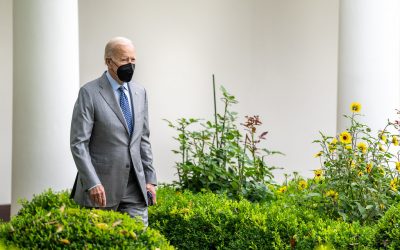The Smithsonian’s African American history museum in Washington, D.C., states that while instances of slavery can be found throughout human history, the practice of slavery did not become “dehumanizing” until white Europeans came along and took slaves to the Americas. The museum’s West Africa exhibit, which opened Feb. 3 and continues through the end of August, includes the following statement at the entrance of the exhibit.
“Slavery had existed in Africa as it had in other parts of the world, for centuries, but it was not based on race and it did not result in dehumanization and death, as did transatlantic slavery,” the exhibit’s statement declares. It also explains that, “Because the economies of Africa did not depend on slave labor, the number of enslaved people was small until European traders arrived.”
Julia Hotton, curator of the West Africa exhibit titled Captive Passage: The Transatlantic Slave Trade and the Making of the Americas, believes the European transatlantic slave trade was much more violent than the African slave system.
When asked to explain why, as the museum exhibit states, African slavery was not “dehumanizing,” Hotton suggested it would be wise not “to concentrate on that particular phrase,” but added that “it was a different slave system,” in Africa. “[Slavery in Africa] just wasn’t as violent and as perpetual as it was here,” Hotton explained.
When pressed again on the issue of slavery in Africa, Hotton backpedaled. “I am sure it was… I am sure it was dehumanizing. We are now talking about a matter of degree. That is very difficult,” Hotton said. “I don’t know how absolute that is because I can’t guarantee that somewhere along the way a slave somewhere did not die because of mistreatment,” Hotton added.
Brad Phillips, the president of the Persecution Project Foundation, a Christian ministry aiding the current victims of strife in Africa, said the Smithsonian exhibit’s message was one of “hypocrisy and inconsistency.”
Phillips, who has personally witnessed the effects of modern day slavery in Sudan during his more than 60 trips there, told CNSNews.com all slavery is “dehumanizing.”
“Slavery is slavery is slavery is slavery … when you have little children, little girls that are being abducted or sold by their parents for economic reasons, being sold as sexual slaves in Burma and Thailand, it’s all dehumanizing. Let’s just be consistent; let’s apply the same same standards,” Phillips said.
‘Different Levels of Hell’
Professor Robert Engs, a history professor at the University of Pennsylvania, also criticized the Smithsonian’s views about the history of slavery in Africa. “It’s like comparing different levels of hell,” said Engs regarding whether the transatlantic slave trade was worse than Africa’s domestic slave trade.
But Professor Cheikh Babou, an African Studies professor at the University of Pennsylvania, believes race-based slavery was much worse than other types of slavery and agrees with the Smithsonian’s view that African slavery was not “dehumanizing.” “I think that the type of slavery we saw in West Africa and other areas of Africa, where people were connected to their culture and environment, where they were not considered outside of the human purview, was different from what we saw later,” Babou told CNSNews.com. According to Babou, many African slaves were treated like family members. “A domestic slave, a slave that was pretty much incorporated into family, was like an adopted child in the family. They were not a commodity, they were not dehumanized,” Babou explained. [Yeah right!–CM]
Phillips disagreed, insisting that Africa’s domestic slave trade was and still is dehumanizing.
“Slavery is a cultural system. It has been going on [since]…Moses,” Phillips said.
“Of course, [slavery in Africa] was dehumanizing, of course, people were denied their God-given rights, people were treated as sub-humans, they were treated as animals,” he added.
Phillips said modern day slavery in Africa frequently results in “having your hands and feet cut off, sexual slavery, chattel slavery, being forcibly evicted from your home, having your wives taken, your children being taken by force for slavery.”
Phillips pointed to the existence of slavery today in Sudan as evidence of a double standard among academics and political leaders.
“Where is the outrage? The same people that want reparations for American slavery — where is their outrage for Africans who are being slaughtered today?” Phillips asked.
The Smithsonian is already being criticized for its portrayal of America at the Museum of American History.
The series of Smithsonian museums receive approximately two-thirds of their funding from the federal government and the rest from corporate and private donations.
The U.S. National Park Service is also under fire for presenting a video at the Lincoln Memorial that many visitors believe implies Abraham Lincoln would have supported abortion and homosexual “rights,” as well as the modern feminist agenda. However, the Park Service is seeking to modify the content of the video, following several reports by CNSNews.com.
Made available through www.CNSNews.com



